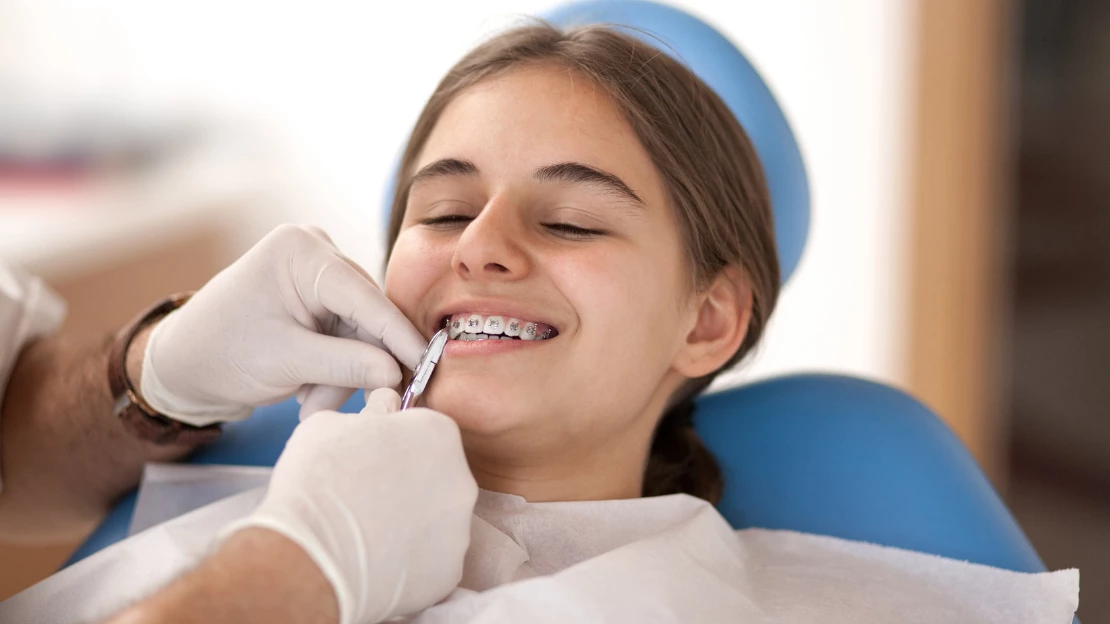About Legacy Orthodontics
About Legacy Orthodontics
Blog Article
Legacy Orthodontics - The Facts
Table of ContentsThe Single Strategy To Use For Legacy OrthodonticsGetting The Legacy Orthodontics To WorkLegacy Orthodontics for BeginnersSome Known Incorrect Statements About Legacy Orthodontics Not known Factual Statements About Legacy Orthodontics
In enhancement, we offer flexible therapy timetables, versatile repayment alternatives and an enjoyable, satisfying experience.An orthodontist is a dental practitioner trained to detect, protect against, and treat teeth and jaw irregularities. They remedy existing problems and are trained to identify troubles that may develop in the future. Orthodontists collaborate with people of any ages, from children to adults. People commonly associate an ideal smile with health.
Malocclusion, or misaligned teeth, can lead to dental concerns, including tooth decay, gum tissue disease, and challenging or uncomfortable eating. Yet not every person is birthed with straight teeth. If you have a bad bite or huge spaces between your teeth, you may intend to seek advice from a dental practitioner concentrating on orthodontic care.
Legacy Orthodontics Fundamentals Explained
( Picture Credit Report: DigitalVision/Getty Images) Orthodontists utilize fixed and detachable oral gadgets, like braces, retainers, and bands, to transform the setting of teeth in your mouth. Orthodontic therapy is for dental abnormalities, consisting of: Misaligned teethBite problems, like an overbite or an underbiteCrowded teeth or teeth that are too much apartJaw misalignmentThe objective of orthodontic treatment is to boost your bite.
While you might think of orthodontists as generally for kids or teenagers who require braces, they can deal with dental troubles at any type of age. Orthodontists go to university, oral school, and orthodontic institution.
, however not all dental professionals are orthodontists. They concentrate on two locations: Just how to correctly and safely relocate teeth How to correctly assist growth in the teeth, jaw, and faceOnce an orthodontist has actually completed training, they have the choice to come to be board certified.
Fascination About Legacy Orthodontics
Imbalance, or malocclusion, is one of the most usual factor people see an orthodontist. It is genetic and is the result of size differences in between the top and reduced jaw or in between the jaw and teeth. Malocclusion results in tooth overcrowding, an askew jaw, or uneven bite patterns. Malocclusion is generally treated with: Your orthodontist attaches steel, ceramic, or plastic square bonds to your teeth.
Some individuals need a headgear to aid move teeth into line with pressure from outside the mouth. A retainer is a customized device that keeps your teeth in area.
They're usually used on children. They can create extra space in the mouth without needing to draw teeth. If you have a severe underbite or overbite, you could require orthognathic surgical procedure (also called orthodontic surgical treatment) to lengthen or shorten your jaw. Orthodontists use cords, surgical screws, or plates to sustain your jaw bone.
You may need to see an orthodontist if you have: Crowding or otherwise adequate space for all of your teethOverbite, when your upper teeth come by your bottom teethUnderbite, when your base teeth are as well much forwardSpacing or problems with gapsCrossbite, which is when your upper teeth fit behind your base teeth when your mouth is closedOpen bite or an upright space between your front bottom and top teethMisplaced midline, when the center of your bottom and upper teeth do not align Dealing with an oral malocclusion can: Make attacking, eating, and speaking easierImprove the balance of our face and your general appearanceEase discomfort from temporomandibular joint problemsDifferent your teeth and make them easier to clean, helping avoid tooth decay or dental caries It's often a dental practitioner that initially notifications misaligned teeth throughout a routine exam.
The Facts About Legacy Orthodontics Uncovered

Throughout your initial orthodontic examination, you'll likely have: An oral examPhotos taken of your face and smileDental X-raysPanoramic (360 level) X-rays of your face and headImpressions to produce mold and mildews of your teethThese tests will help your orthodontist know just how to continue with your therapy. leesburg braces. An orthodontist is a dental professional who's had training to treat your teeth and jaw
An orthodontist is focused on your bite, so something like a broken tooth would be managed by a dental professional. Orthodontists are focused on your bite, or the method your teeth fit together, and the straightness of your teeth.
Ever questioned exactly how stars constantly seem to have flawlessly straightened teeth? Orthodontists are oral specialists that focus on remedying abnormalities in the teeth and jaws.
The 9-Second Trick For Legacy Orthodontics

, orthodontists have a diverse toolkit at their disposal. These tried-and-true braces use a system of brackets bonded to the teeth and linked by cables.
Clear aligners, like Invisalign, are a prominent choice for people looking for a much more very discreet therapy alternative. These removable trays are tailor-made to considerably change the teeth's placement. Headwear may be made use of along with dental braces or aligners to use additional targeted pressures, specifically for dealing with jaw disparities. In situations of slim jaws, palatal expanders can be made use of to develop area for appropriate tooth positioning.
Report this page